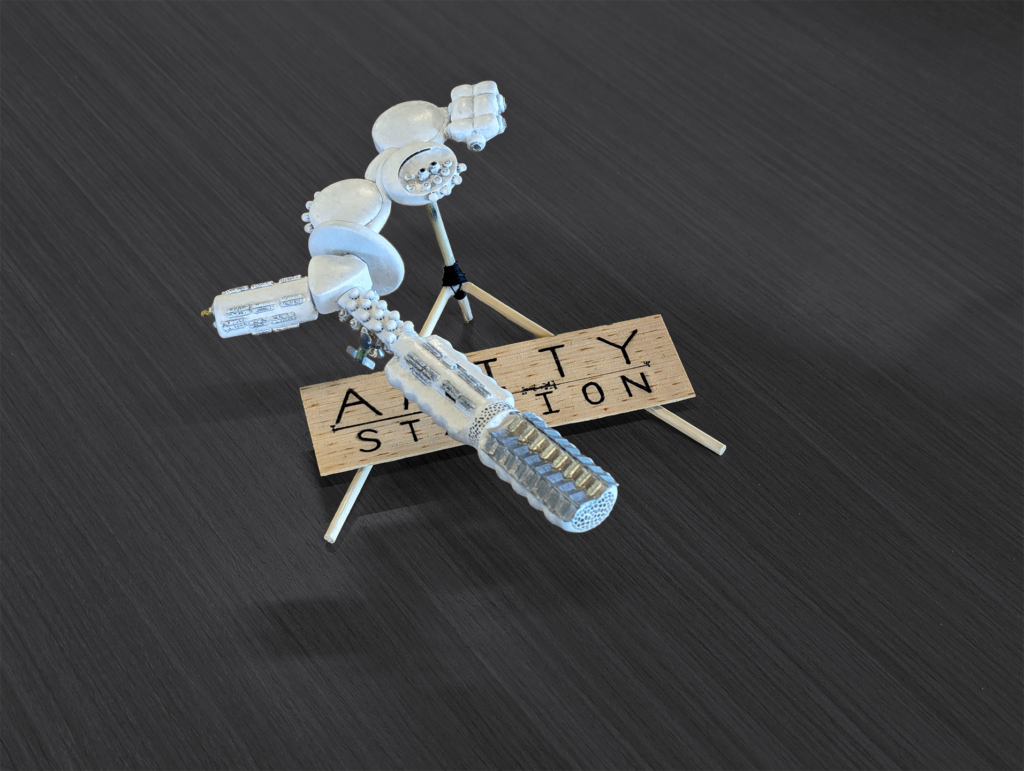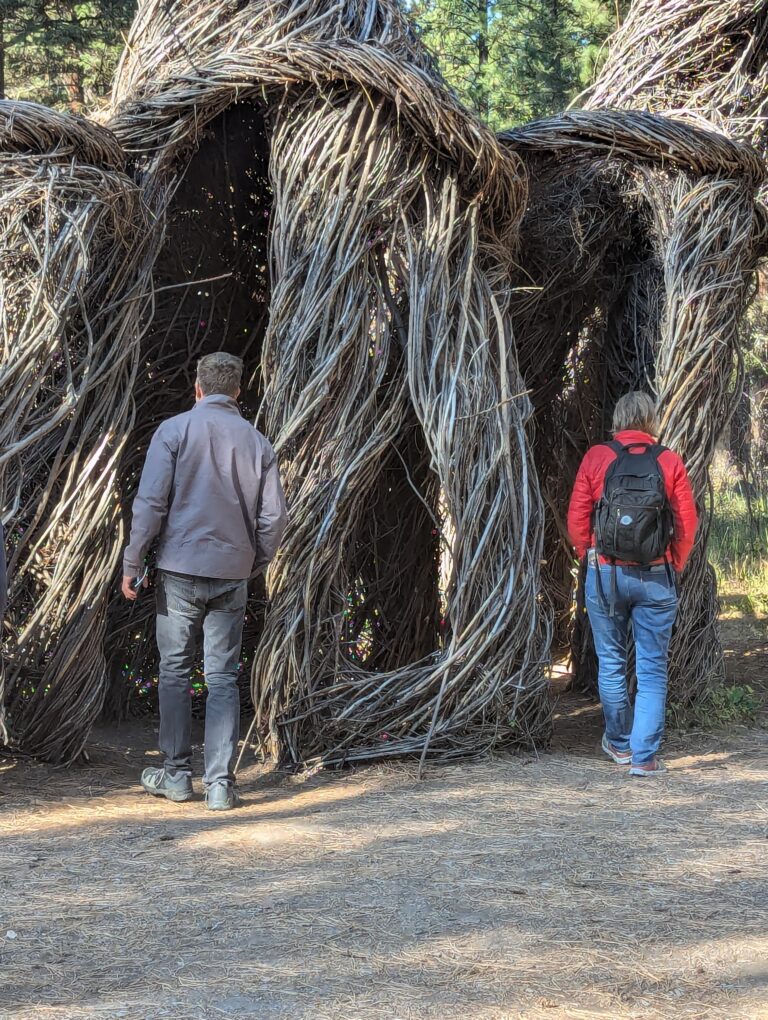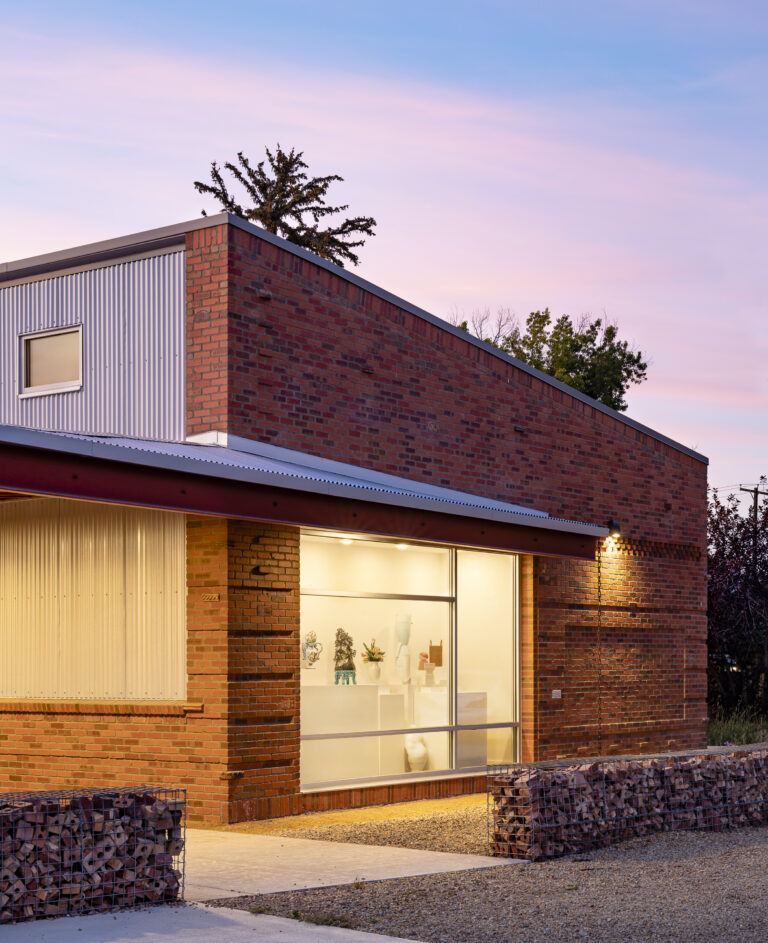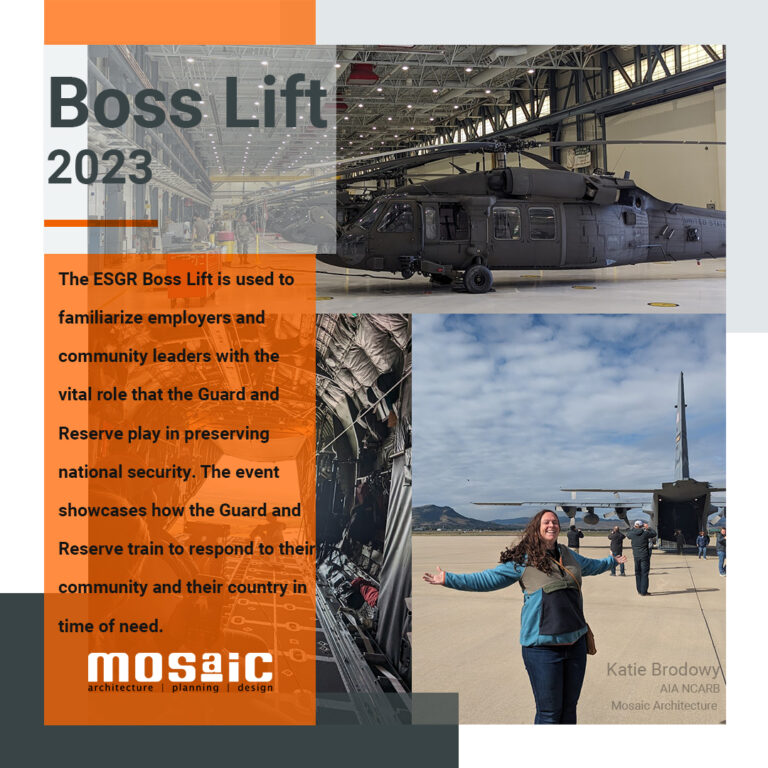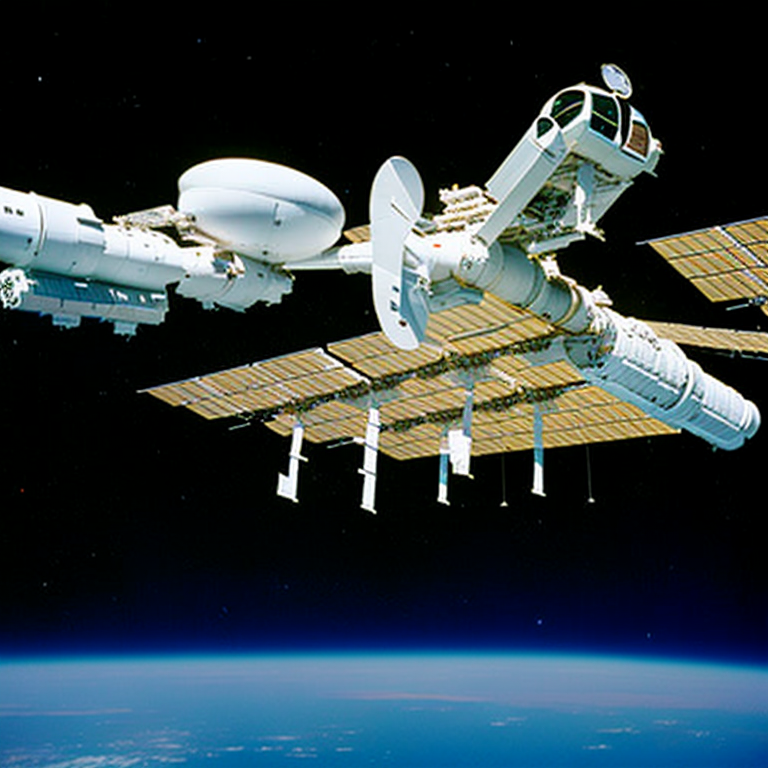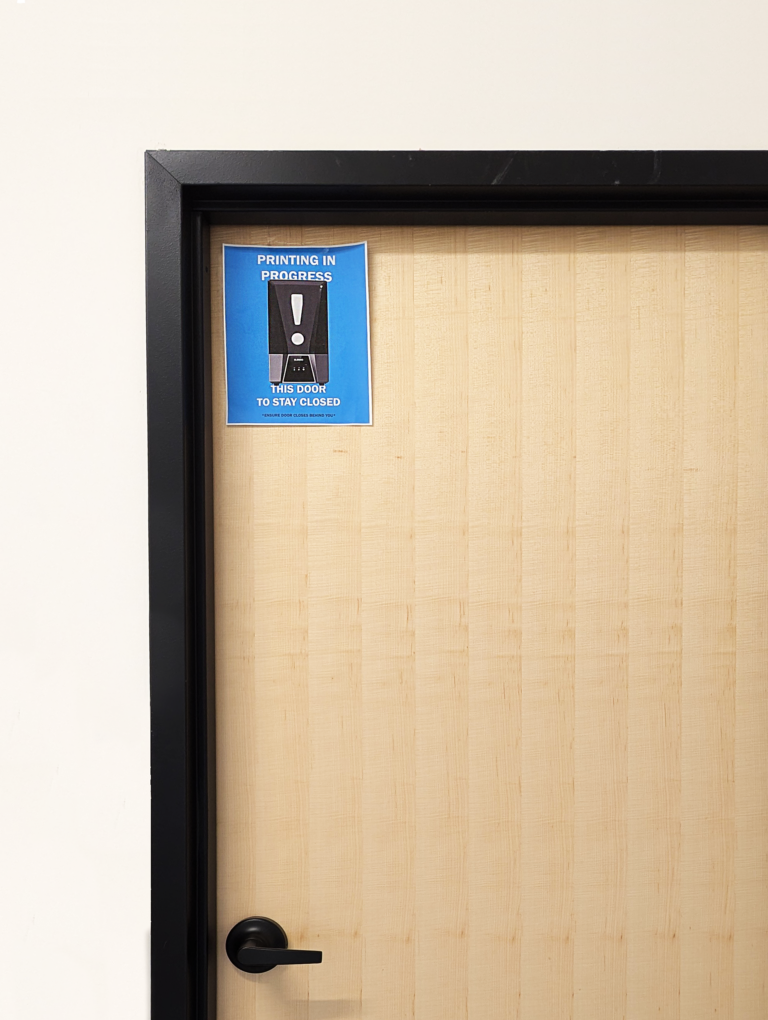Amity Station
Designing for Peace in an Extreme Isolation Environment
A special thanks to Steve Juroszek and Mike Everts, advising thesis professors at MSU, for their mentorship through the duration of this project.
The following is an excerpt from Austin Coon’s Master Thesis
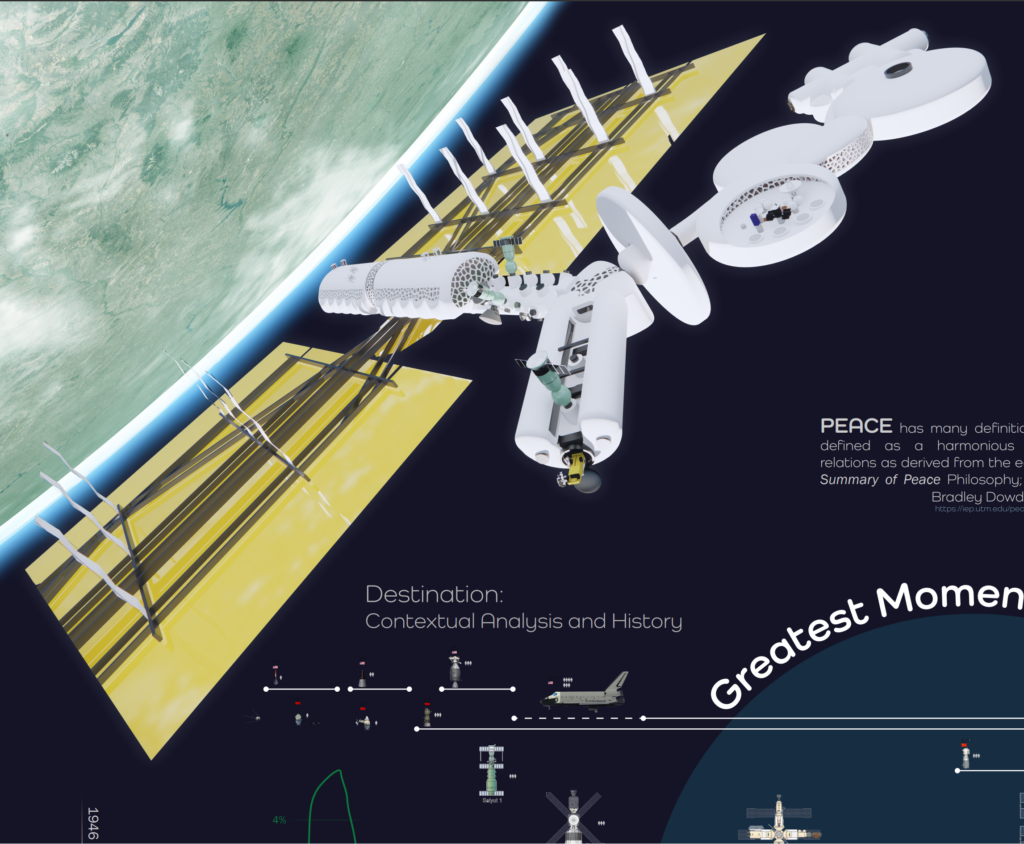
In research environments, the relationships between researchers are imperative to the success of the research. In extreme isolated research environments (such as Antarctica), it becomes important to take measures for ensuring positive crew discourse. Possibly the most underdeveloped architecture for Isolation laboratory typologies are space stations. This thesis project sought to determine through rigorous research how architecture can facilitate and promote peace. The first step was to understand the scope and system integrated with such a project. In summary, the research concluded that an increase in dialogue/communication fosters relationships of peace. Design was then focused on increasing three levels of dialogue: Internal, micro-community (between crew), and macro-community (Space to Earth).
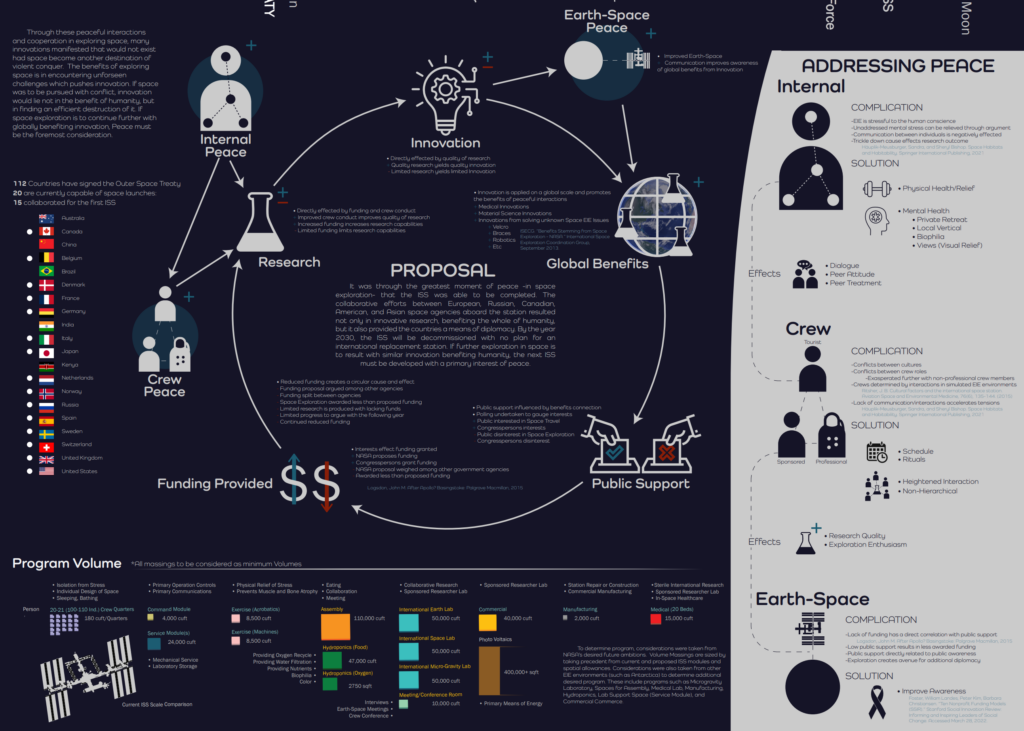
After the analysis of the greater involved system, it was found that an improvement of communication and interaction between Space (station) and Earth would improve relationships and impressions of space exploration.
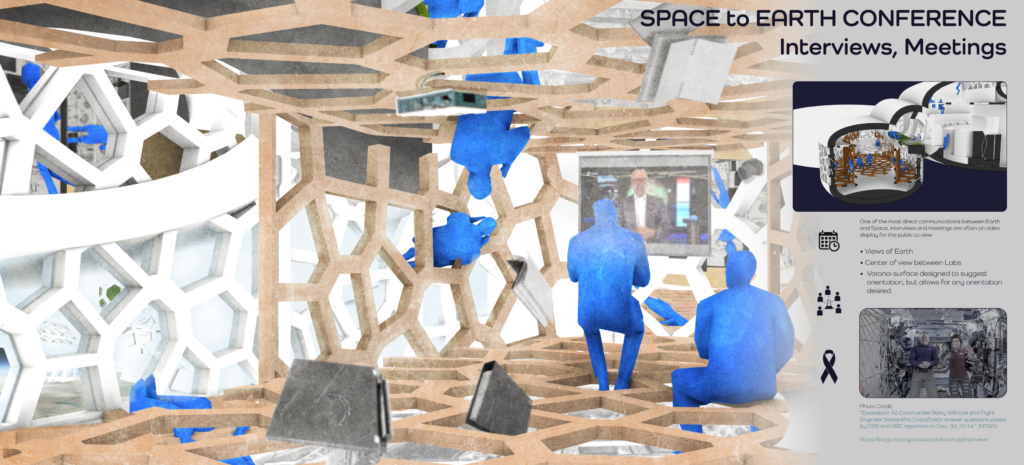
The following steps included analyzing simulated crew dynamics to determine and provide areas of opportunity/intervention where crew may pause or interact with one another. This becomes complicated as the laboratory is international, meaning multiple cultures from multiple time zones are engaging in a variety of activities simultaneously, sleeping, eating, working, relaxing, etc.
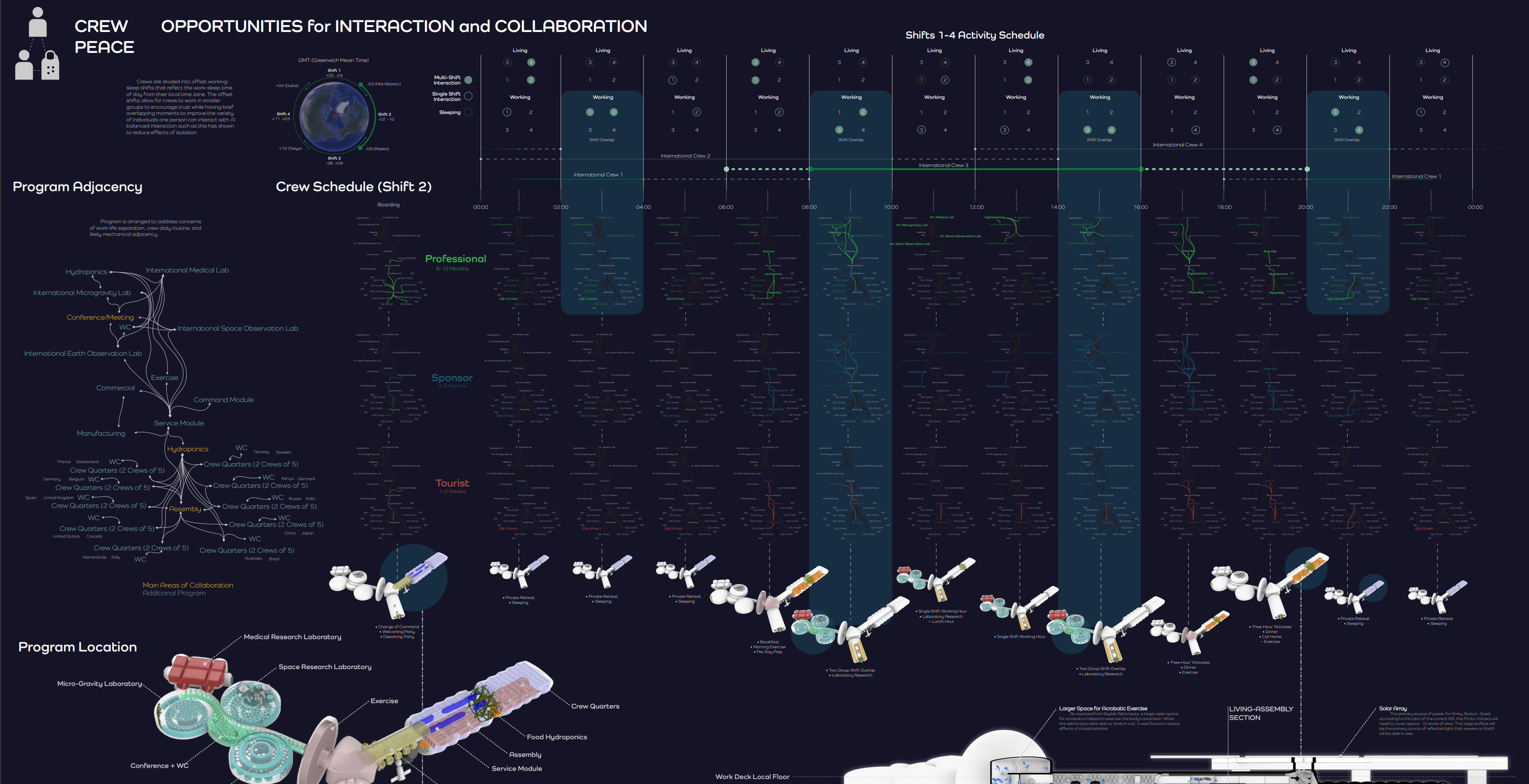
One of the most dominant rituals aboard the current ISS is meal communion where, ironically, crew will gather to float around a single table and enjoy a meal together. Like other crew rituals, the ability to share and engage with one another in activities reminiscent of home life increases crew interaction and morale.
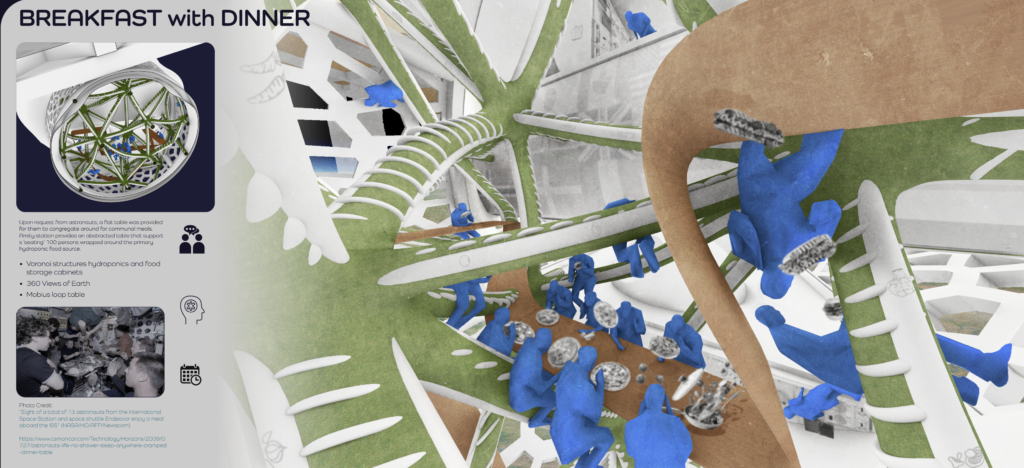
One publicly broadcasted ritual is the change of command where all crew gather to celebrate the exchange of crew command from one individual to another.
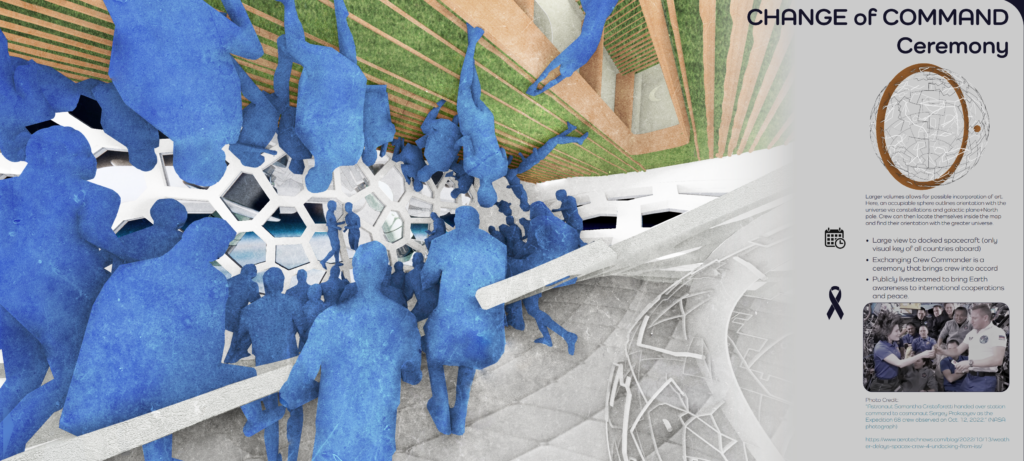
Orientation in a weightless environment is integral to support mental wellbeing where any direction can be ‘up’. Developing a station with an overall common ‘vertical’ orientation helps crew to quickly navigate and feel comfortable. Without a designed vertical, previous astronauts have reported a noticeable increase in feeling effects of claustrophobia. This begins to address the way design affects ‘internal peace’. When several individuals become stressed, it directly affects their relationship with others. Unresolved internal stresses then cause a snowballing condition that negatively affects research, negatively affecting the communication and interaction between Space and Earth.
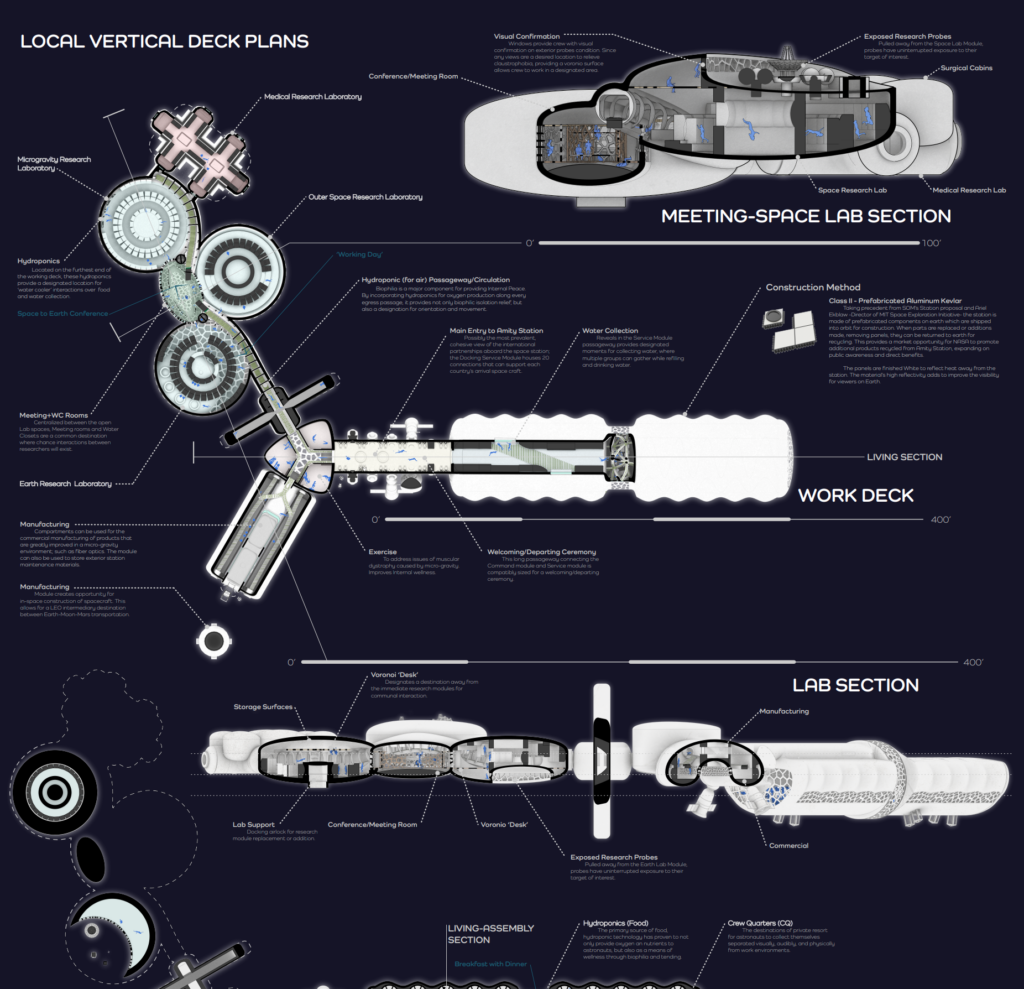
Providing areas for individual retreat helps relieve tensions caused by work and isolation given there is complete visual, audible, and physical separation from work environments. While it is difficult to encapsulate an entire year of research and design into a few sentences, these have been a few of the key takeaways in how peace can be designed for, even in the most restrictive of conditions.
